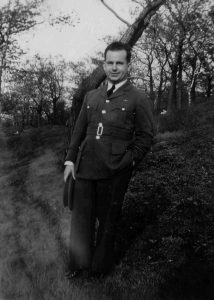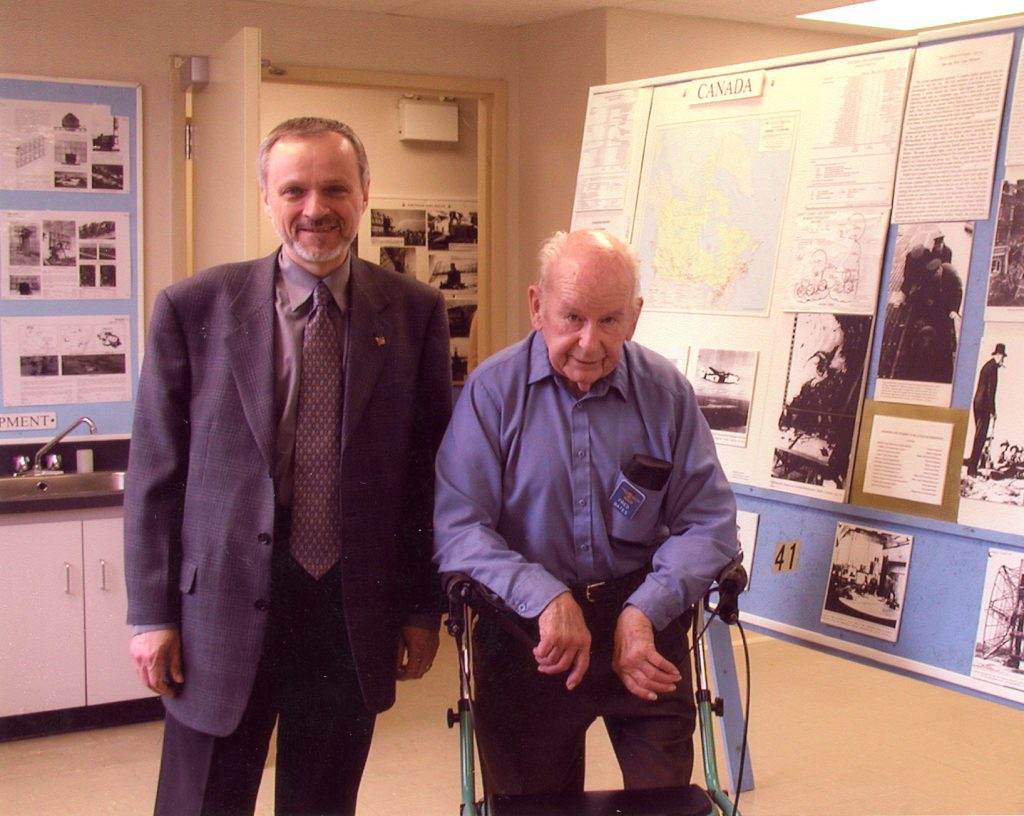People in Radar – Fred Bates
George Frederick Bates, RCAF
Fred Bates was a member of the Royal Canadian Air Force and served overseas during World War II. During his service, he met Janet Taylor, and they were married after the war. Fred became an active member with the Secrets of Radar Museum in London, ON.
[Adapted from oral history interview.]
A Letter
Dear kids,
I probably shouldn’t be writing this letter, but then again, I’ve never been the sort of guy to do what he’s supposed to. In case I don’t get the chance to say this in person, or if I forget in the future, I want you to know that your dad helped save the world. Well maybe that’s a bit of a stretch, but it sure seemed like it at the time.
It all started in 1941 when I was just plain ol’ shopkeeper in Wingham, Ontario. War had broken out in Europe the year before, and I’d heard on the CBC the Brits were looking for guys who knew electronics.
Now, I didn’t have any expertise myself, but I signed up with the Air Force anyway. They sent me to take a few radio and electronics courses at the University of Guelph. Turns out I had a knack for it and passed my exams with flying colours.
A lot of the guys who passed were sent for “special training” at RCAF Clinton. We learned about this new technology called Radio Direction Finding (RDF for short); you now know it as Radar. It was top secret at the time, and we were all sworn to secrecy for 50 years, which is a long time.
Usually guys were in and out of there in 6 weeks, with lessons in the basics of radar. I took a couple extra courses on IFF (Identification Friend or Foe), and GEE navigation systems. I came in as a lowly non-commissioned Aircraftsman 2nd Class (AC2) and left as a Pilot Officer – not bad, eh?
I thought I’d be going over to England with the rest of the boys, but the Empress of Japan sailed without me. Me and three other guys were “detained” for four days then sent to the West Coast of BC. (Her first solo voyage was a secret).
We were supposed to arrive at our new post on New Year’s Day 1942, but one of my companions turned the “1” on the orders to a “4”. So we arrived in Vancouver on January 4th, after a nice relaxing journey.
When I got out there, the officer at 27 Detachment told me I was going to be in charge. So, I gathered up my new crew, including some men who’d been out there for a year spotting submarines and aircraft by sight.
The ship dropped us off on a speck of land, called Marble Island, off the BC coast, and told us to build a radar station. It took 65 of us 28 hours to unload the equipment, and another 5 days to haul it all up to the top of the rocks. And then we built that station from scratch.
Sometimes I had to be creative about getting fresh supplies for my men. Remind me to tell you about fishing with canned ham, and the coal incident one of these days. After an episode involving a bulldozer, and somehow avoiding a court martial for the second time, I volunteered to be sent overseas. I think they were glad to see me go.
While I was stationed at one of my many postings in England, I met a young English woman named Janet Taylor. She was a radar operator for the Women’s Auxiliary Air Forces. It didn’t take me long to realize she was the one for me. After our service was done, and the war was over, I asked her to marry me. I think you know what her answer was.
Your loving father,
G. Fred Bates
Courtesy of Fred Bates



